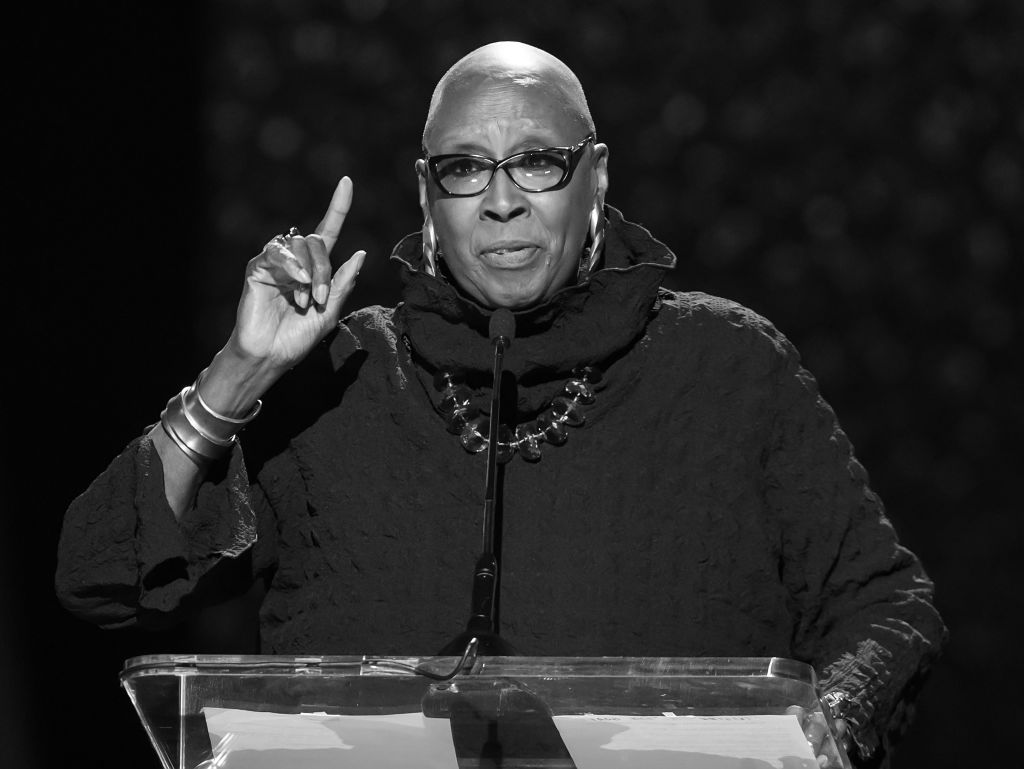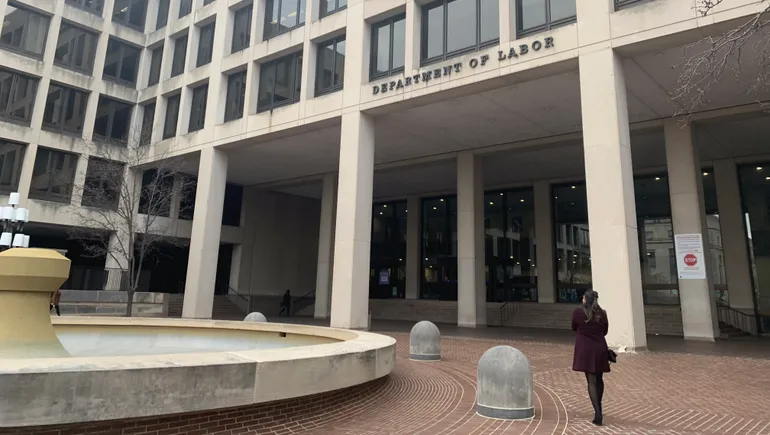“If you need people to be there for the country and to fight for the country, why would you hold them up for a medical bill?”
Samaria Bradford
Samaria Bradford, 27, Goldsboro, North Carolina
Approximate Medical Debt: $5,000
Medical Issue: Emergency room care
What Happened: In late August 2022, Samaria Bradford was prepared to leave for basic training any day. She’d been in contact with an Air Force recruiter. Her qualifying test score from two years earlier was still valid, and she’d lost weight to meet the physical requirements. She felt so good about it that she gave two weeks’ notice at her nursing home job.
Then the recruiter sent a text: “We got your credit check back you have multiple accounts in collects.”
Bradford had unpaid bills — mostly from hospitals and ambulance companies — that had gone to collections. The recruiter said she needed to set up payment plans to address the debts before she could enlist.
“I was very upset and surprised,” Bradford said. “I didn’t know your medical debt could stop you from joining.”
Bradford had dreamed of enlisting in the Air Force for years. She took the qualifying exam in 2020 but delayed her enlistment so she could stay close to home and support her younger sister, who was in high school at the time.
She worked a variety of jobs to stay afloat — as a cashier, then as a cook and a staff member at a bowling alley for a bit. Later, she took overnight shifts at a hospital. The pay covered rent, utilities, and food, but she had little left over.
Most of the jobs didn’t offer benefits, and since North Carolina had not expanded Medicaid, Bradford did not qualify for the public insurance.
Over the years, when she landed in the emergency room without insurance, bills racked up quickly. One time, she had a rash along her back that she feared was an allergic reaction. Another time, she was dehydrated and had to be brought to the hospital by ambulance. A car wreck led to another visit.
By 2022, when the Air Force recruiter looked into her finances, Bradford owed roughly $5,000 spread across a half-dozen bills. In response to his text about the debts, she wrote, “I’m guessing is doctor bills?”
What’s Broken: Several branches of the military check financial histories when evaluating recruits. “Credit checks aid in determining recruit financial responsibility while aiming to safeguard national security,” said Christine Cuttita, an Air Force Recruiting Service spokesperson. Depending on the particulars of the case, she confirmed, an individual can be disqualified from enlisting because of debt.
Red flags on a credit report include late payments, long-term debts, or total debt — including student loans, mortgages, and medical debt — that exceeds 40% of the person’s income. There’s no strict disqualifier; rather, a squadron commander evaluates each case and assesses it in the “best interest of the Air Force,” Cuttita said.
Employers in other sectors also commonly use credit checks to evaluate candidates.
However, research from the federal Consumer Financial Protection Bureau suggests medical debts should be treated differently than other debts.
The CFPB found that unlike credit card debt, medical bills that have gone to collections aren’t an accurate predictor of someone’s likelihood to pay bills. In fact, the agency determined that people with “paid medical collections were less likely to be delinquent than other consumers with the same credit score.”
The Biden administration this year advised federal lenders to no longer consider medical debt when evaluating loan applications. VantageScore, one of the companies that calculate consumers’ credit scores, has said it will stop using medical collections in its formula.
But running credit checks on job candidates remains common. For those with medical debt, that can mean being turned away from jobs because of the bills they are trying to pay off.
What’s Left: After receiving the recruiter’s text, Bradford set out to make payments on as many medical bills as she could. Using savings from the nursing home job she had recently left, she closed out two accounts on which she owed a few hundred dollars and made smaller payments toward bills of $1,000 or more.
But, it turned out, those were not the debts showing up on the Air Force credit check.
“Of the five payments I made, only one of them was connected to what my recruiter saw on his end,” Bradford said.
Medical debts can be difficult to track, especially once hospitals and doctors’ offices sell them to collection agencies. A given bill may be reported to one credit agency but not another, meaning any single report cannot give a full picture of someone’s debt.
Adding to the confusion, the credit check that Bradford’s recruiter shared with her showed the amount of each debt but not to whom it was owed.
Bradford is now getting help to track down each debt from a friend who used to work in hospital billing. She has also taken a new job to ensure she can pay down those bills.
With the time that has passed, her previous score for the Air Force’s qualifying test is no longer valid. She’s planning to retake the exam and try to enlist next year.
“I’m trying to solve the problem now to go ahead,” Bradford said. But she still questions why the Air Force would delay anyone’s enlistment for this kind of debt.
“If you need people to be there for the country and to fight for the country,” she said, “why would you hold them up for a medical bill?”
About This Project
“Diagnosis: Debt” is a reporting partnership between KHN and NPR exploring the scale, impact, and causes of medical debt in America.
The series draws on the “KFF Health Care Debt Survey,” a poll designed and analyzed by public opinion researchers at KFF in collaboration with KHN journalists and editors. The survey was conducted Feb. 25 through March 20, 2022, online and via telephone, in English and Spanish, among a nationally representative sample of 2,375 U.S. adults, including 1,292 adults with current health care debt and 382 adults who had health care debt in the past five years. The margin of sampling error is plus or minus 3 percentage points for the full sample and 3 percentage points for those with current debt. For results based on subgroups, the margin of sampling error may be higher.
Additional research was conducted by the Urban Institute, which analyzed credit bureau and other demographic data on poverty, race, and health status to explore where medical debt is concentrated in the U.S. and what factors are associated with high debt levels.
The JPMorgan Chase Institute analyzed records from a sampling of Chase credit card holders to look at how customers’ balances may be affected by major medical expenses.
Reporters from KHN and NPR also conducted hundreds of interviews with patients across the country; spoke with physicians, health industry leaders, consumer advocates, debt lawyers, and researchers; and reviewed scores of studies and surveys about medical debt.
KHN (Kaiser Health News) is a national newsroom that produces in-depth journalism about health issues. Together with Policy Analysis and Polling, KHN is one of the three major operating programs at KFF (Kaiser Family Foundation). KFF is an endowed nonprofit organization providing information on health issues to the nation.
USE OUR CONTENT
This story can be republished for free (details).





















Discussion about this post